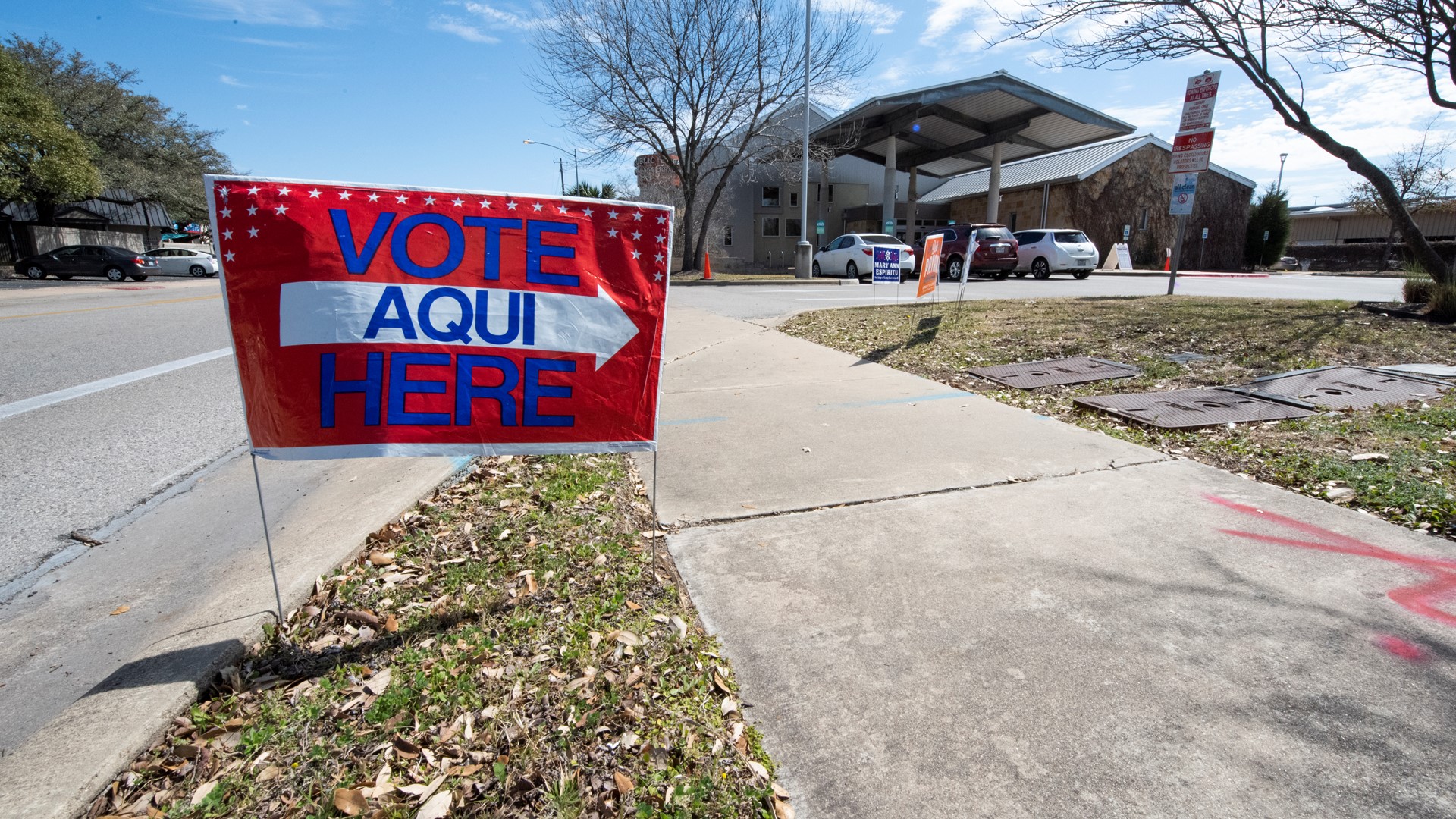KVUE Voter Guide: What you need to know to vote in the Nov. 5 general election
Here is everything you need to know to cast your ballot in the Nov. 5 election, from where to vote to what you need to bring with you to your polling place.
John Gusky

You don't need us to tell you: This election is a big one.
In addition to voting for a presidential candidate, Texas voters will also cast their ballots in a U.S. Senate election and Austin voters will weigh in on who should be mayor. And that's just scratching the surface.
This voter guide breaks down everything you need to know to cast your ballot in the general election, from how to find your polling place to what you need to bring with you to vote.
When and where you can vote
The first thing you need to know: the last day to register to vote in this election was Oct. 7. Here's how to check if you're currently registered.
To vote on Election Day, you will want to see if the county you live in participates in the Countywide Polling Place Program (CWPP). If your county does participate in CWPP, you can vote at any polling place in the county. If your county doesn't participate in CWPP, you can only vote at the polling place assigned to you on Election Day.
On Election Day, all polling places across Texas are open from 7 a.m. to 7 p.m. As long as you get in line before 7 p.m., you will be able to vote.
If you voted early or by mail, here's how you can track the status of your ballot.
What you need to bring to vote
To vote in Texas, you need to have a form of identification when you go to cast your ballot at a polling location.
Here is a list of acceptable forms of photo identification:
- Texas Driver License issued by the Texas Department of Public Safety (DPS)
- Texas Election Identification Certificate issued by DPS
- Texas Personal Identification Card issued by DPS
- Texas Handgun License issued by DPS
- U.S. Military Identification Card containing the person’s photograph
- U.S. Citizenship Certificate containing the person’s photograph
- U.S. Passport (book or card)
If you don't have one of the forms of ID listed above and can't reasonably obtain one, you can bring one of the following in order to execute a "Reasonable Impediment Declaration":
- Copy or original of a government document that shows the voter’s name and an address, including the voter’s voter registration certificate
- Copy of or original current utility bill
- Copy of or original bank statement
- Copy of or original government check
- Copy of or original paycheck
- Copy of or original of (a) a certified domestic (from a U.S. state or territory) birth certificate or (b) a document confirming birth admissible in a court of law which establishes the voter’s identity (which may include a foreign birth document)
Reminder: Cellphones are not allowed inside polling locations. Voters can, however, print a copy of their sample ballot and bring it with them to the polls or bring written notes.
What will be on the ballot?
In addition to voting for our next president, Central Texas voters have the opportunity to vote in a U.S. Senate race, U.S. House races, Texas House and Senate races, sheriffs, county positions and more.
Austin voters will also cast their votes for mayor, and half of the city council seats are also on the ballot this election.
For a breakdown of all the federal, state and local races you could see on your ballot this election, click here.
How to see election results
For all the latest election coverage, head to KVUE.com/VoteTexas. Starting right after polls close at 7 p.m. on Election Day, election results will begin populating on KVUE.com/Elections. You can also watch KVUE's election night streaming show staring at 7 p.m. by downloading KVUE+ on your streaming device
